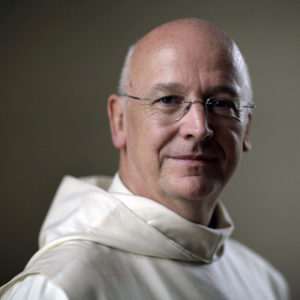Today, the Annunciation, is the real feast of the incarnation, nine months before Christmas Day. It must be one of the most frequently imagined and represented events in human history: an angel appearing to a young girl probably between fourteen and nineteen. (Shakespeare’s Juliet was thirteen). The angel told her not to be afraid but that she was chosen to bear a child, whose name would be Jesus. Mary gave her assent and opened her will to that of God in a very simple formula: Here I am… What you have said, so be it. The conception happened in her surrender to her being ‘overshadowed’ by the Holy Spirit.
This story is of the greatest mythic simplicity which modern rationalistic minds find as difficult to understand as it does magic and any post-rational vision of reality. We need to ask ourselves if we would like to understand it. But when we hear it for the first time, we need only to be open to it, to listen without dismissing it as ‘just a fairy tale’, and to hear it again and again until a feeling of awe replaces our scepticism. Maybe for us the focal point is not imagining how beautiful the angel was but instead focus on Mary’s existential dilemma. And her swift transition from rational scepticism – ‘how can this be?’ – to the total personal surrender of ‘Here am I; I am the Lord’s servant; as you have spoken so be it.’ (Lk 1:26-38).
Paying attention to this is more respectful and effective than trying to deconstruct the words or imagine ‘what, if anything, actually happened’. Sacred texts in all traditions resolutely resist this sort of treatment and insist instead that we surrender to a way of unknowing if we are to understand. The tender, powerful beauty of the paintings of the Annunciation found in churches and galleries the world over, help us to trust the story as a channel of sacred truth without our yet understanding it.
We aren’t supposed to celebrate the Annunciation in Holy Week so there is another gospel which describes Mary of Bethany, her sister Martha and their brother Lazarus whom he raised from the dead, entertaining Jesus at an evening meal a week before his death. Mary, the symbol of contemplation opens a bottle of very expensive perfume, ‘oil of nard’. Nard was associated with a beautiful scent but also with its properties as a sedative and a medicinal herb. Mary anoints the feet of Jesus with the ointment; and he defends her gesture when Judas attacks her for wasting something valuable that could have been sold and given to the poor.
Both gospels defy exclusively rational understanding. But also both are like a key to opening the mind to the intelligence of the heart. This brings a widening of our tent, which is the enclosed space consciousness and our way of judging everything – until we discover, through beauty or love, in words or silence that we each have within us a capacity to see beyond the surface of things and trust the unknown depth. ‘We cannot create experience, we must undergo it.’





